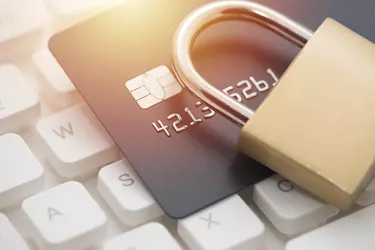
When company blocks your credit card, it places a hold on your credit line for the estimated amount of your final bill. Even though you haven't completed the transaction, the portion of your credit that's blocked no longer is available for other charges. This can prove especially inconvenient if the merchant places a larger hold than you intend to use, as your card then may have less purchasing power than you think.
How a Block Works
Video of the Day
Service providers, such as hotels and car rental agencies, often block your credit card when you start a transaction -- for example, when you check-in or pick up a car. The business estimates your final bill for a certain number of days, plus applicable taxes and fees. It often also adds additional estimated charges, such as for as room service or gasoline.
Video of the Day
Using an electronic connection to your credit card issuer, the business reserves the estimated amount of your final bill on your credit card. Assuming you have enough available credit, the bank approves the amount and subtracts it from your available credit. For example, you may have $2,000 in available credit, and a hotel requests a block for $800. Once the bank accepts the charge, your available credit falls to $1,200.
The Good and the Bad
The block all but guarantees that the final charge will go through, as long as it doesn't exceed the blocked amount. As the credit card account holder, this means you can't use any of the blocked credit until the hold is lifted.
This remains the case even when the estimated charges may exceed what you'll actually spend by a significant amount. For example, a hotel may add the equivalent of several bar bills to your estimated amount, reducing your available credit. This isn't a problem if you have credit to spare, but if you're pressing up against your credit limit, you may get an unpleasant surprise when you try to use the card to pay for dinner later.
Warning
If you don't have enough credit, a hold can cause your card to be refused even though you haven't actually spent to the limit.
Block Status
If you use the same card to pay your bill that you used to begin your transaction, your actual charge should appear and the hold should disappear in 1 to 2 days, according to the Federal Trade Commission. If you use another method, such as a different card or a check, it's not unusual for a block to remain far longer.
Avoid Surprises
You can protect yourself from surprise blocking by calling your credit card company and asking whether it allows blocks, who it allows to block your card and how long blocks can last. The answers you get may impact which card you use.
Ask those questions before you swipe the card as well. When reserving a room or car, ask whether the business blocks your card and what amount will be blocked. Also ask how long the block will stay on your card.
Removing Blocks
To get a block removed as soon as possible, complete your transaction using the same card you used initially. If you prefer to pay by a different method, ask the cashier to remove the block when you pay your bill. Ask how soon the company will remove the block, and follow up if it does not do so.